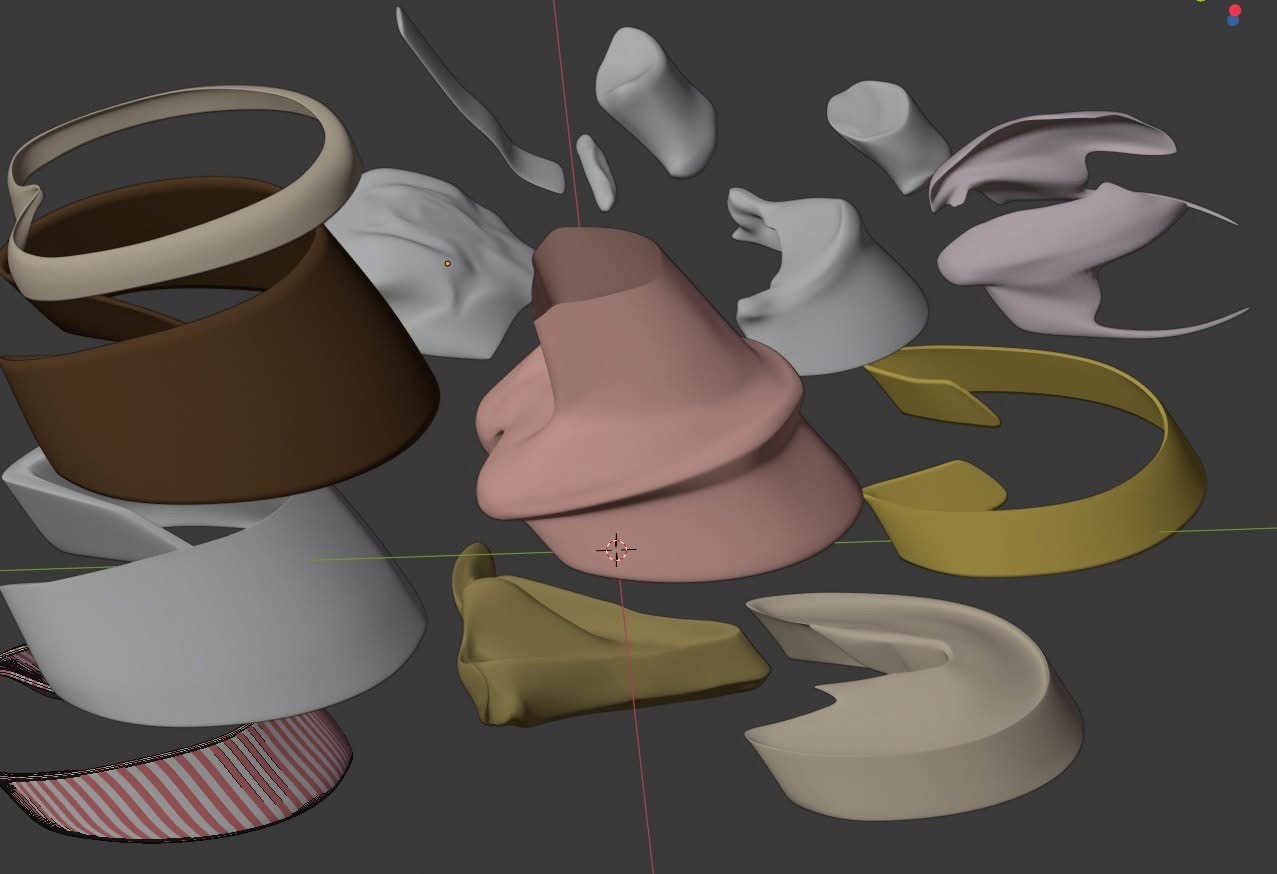
The Bare Foot Trim or Standard Farriery Trim – actually what’s the difference?
Barefoot Trimming vs. Certified Farriery: Anatomy, Physiology & Biomechanical Philosophy
Mark Caldwell PhD., FWCF
1. Introduction
first and foremost this article is by no means a comprehensive analysis of all trimming styles advocated by numerous authors and organisations. Rather, it serves as a general overview of what are the perceived differences in both style and approach. The article is intended to stimulate informed debate amongst both professionals and lay persons alike.
Introduction:
Hoof trimming philosophies diverge significantly: barefoot trimming advocates (e.g. UK’s Jackson/Miller method, Strasser, AANHCP protocols) and certified farriery organisations (WCF, AFA, European bodies) operationalise fundamentally different anatomical and physiological assumptions behind hoof function, balance, and performance.
2. Anatomical & Physiological Assumptions
2.1 Barefoot Trimming Philosophy
Foot anatomy emphasis: Encourages live sole contact, frog-bar engagement, and hoof expansion for shock absorption and circulation through the digital cushion and frog. Functional frog contact may promote stimulation of fibrocartilage growth and improved blood flow (Bowker, 2011)ResearchGate+2Studocu+2Studocu+2ResearchGate+14equipodiatry.com+14Scientific Horseshoeing+14.

Physiological theory: The wild-horse hoof model assumes dynamic hoof expansion and proprioceptive feedback is superior to rigid shod foot. Jackson’s “mustang roll” and natural trim encourage hoof to mirror bare–wild morphology (Jackson, 2019) Wikipedia.
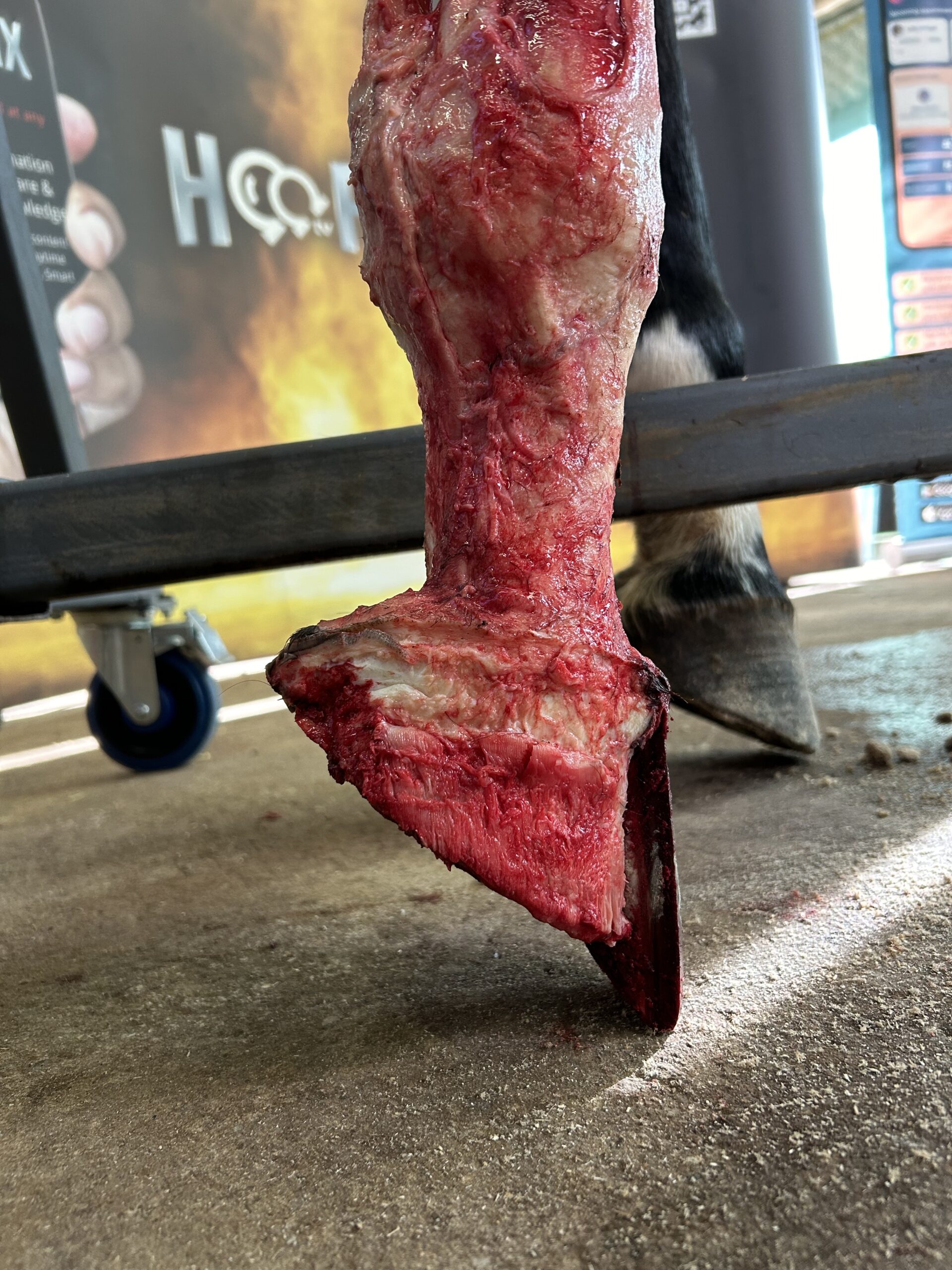
2.2 Certified Farriery Philosophy
Focus on static anatomical alignment: hoof-pastern axis alignment, center of articulation aligned with P2/P3, heel-toe balance, and measured mediolateral symmetry (O’Grady & Poupard, 2001)equipodiatry.com+1equipodiatry.com+1.
Physiological rationale emphasizes lever arm control at the distal interphalangeal joint and injury prevention via predictable biomechanics and measurement-based correction.
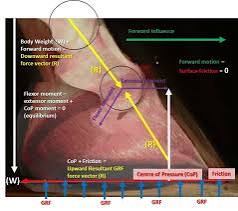
3. Static Foot Balance: Divergent Ideals
Barefoot trimming defines static balance as:
Live sole depth intact, frog-bar contact under weight,
Heels trimmed low and rolled, toe rolled for breakover,
Emphasis on hoof expansion and concavityequipodiatry.comWikipedia+11PubMed+11ResearchGate+11Reddit+1Reddit+1Reddit+7ResearchGate+7Studocu+7.
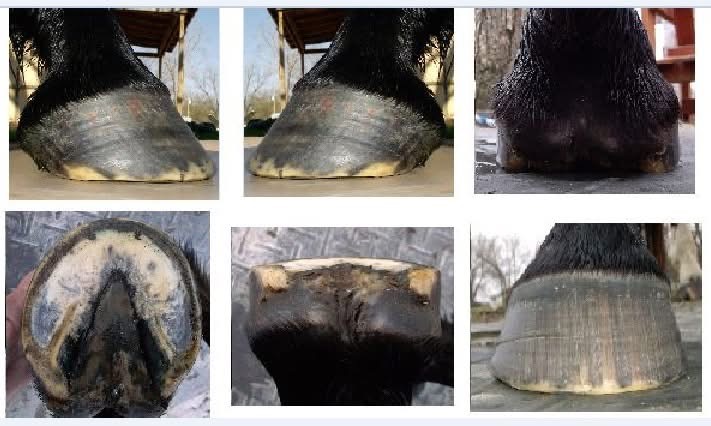
Conventional farriery defines it as:
Hoof‑pastern axis parallel to ground,
Balanced 50:50 toe-to-heel mass, straight mediolateral loading,
Trimming guided by radiographs or anatomical landmarks Studocu+7equipodiatry.com+7equipodiatry.com+7.
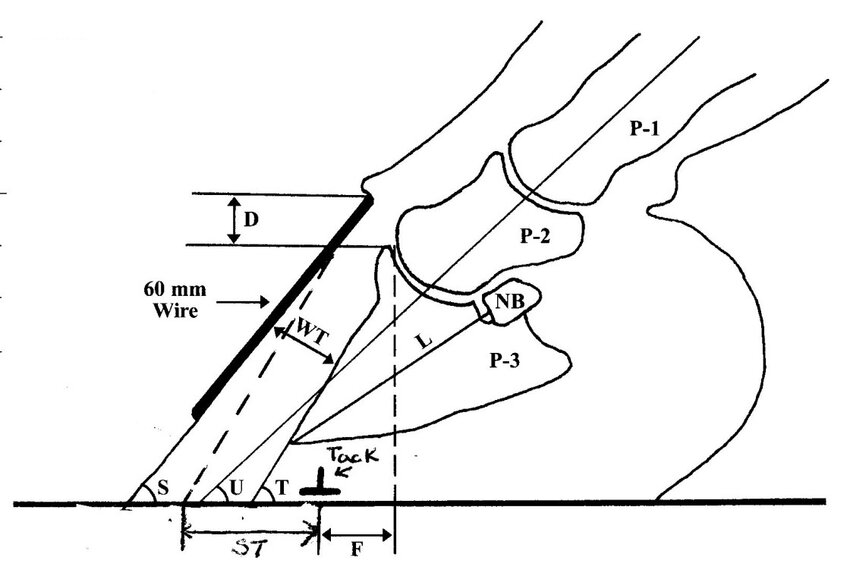
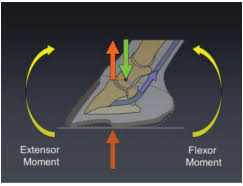
4. Quantified Morphological Differences
A 2011 study (Clayton et al.) reported:
Barefoot trimming increased heel angle, support length, and solar angulation of P3 over 16 months (p<0.05), with frog/bar expansion and increased solar surface contact Studocu+2PubMed+2ResearchGate+2.
A 2021 cohort (Nevison de Klerk) confirmed:
Barefoot-managed hooves displayed steeper heel angles, wider heels, larger frogs, more splaying and flaring compared to shod hooves Reddit+15ResearchGate+15Reddit+15.
(Figure 2: Radiographic heel angle increase over time with barefoot trimming*)
5. Biomechanical Implications in Movement
Barefoot hypotheses:
Increased hoof expansion and frog engagement reduce peak loading via enhanced shock absorption and proprioceptive input (Clayton et al. 2011) Wikipedia+4ResearchGate+4PubMed+4.
The digital cushion, composed of collagen and elastic fibers, absorbs concussion; functional engagement theorized to support limb health (Bowker, 2011) ResearchGate+4PMC+4Studocu+4.
Farrier biomechanical rationale:
Balanced breakover and aligned hoof-pastern axis limit fetlock extension and tendon/joint strain (O’Grady & Poupard, 2001) Studocu+3equipodiatry.com+3equipodiatry.com+3.
Heel mass reaching frog base supports internal structures and provides consistent load distribution (O’Grady, 2003)equipodiatry.com.
(Figure 3: GRF vector and moment-arm comparisons: barefoot vs conventional*)
6. Protocol Variations by Barefoot Groups (UK & USA)
| Organization | Key Features | Anatomical Rationale | Critique |
|---|---|---|---|
| Jackson/Miller (USA) | Mustang roll; contour trim; frog engagement | Promote expansion and proprioception based on wild-horse anatomy | Limited long-term gait or injury outcome studies |
| AANHCP (USA) | 4‑6‑week hoof rhythm; live‑sole trimming | Maximize solar loading, digital cushion function | Variable practitioner standards and inconsistent regulation |
| Strasser Method (German roots) | Very low heel, strict frog-first contact | Mimic wild hoof model rigidly | Case reports of underrun heels, sole sensitivity; no peer-reviewed validation |
| UK Pony Club barefoot practices | Gradual trimming with measured trimming increments | Emphasis on sole protection | Few published anatomical assessments; largely anecdotal |
(Figure 4: Trimming protocol infographics for each group, indicating heel/toe targets*)
7. Critiques and Scientific Controversies
Strasser method: criticized for promoting negative plantar angles and heel underrun; no peer-reviewed validation; anecdotal reports of chronic pain or bruising in static hoof planesWikipedia+7Wikipedia+7PMC+7PubMedStudocu.
Rapid barefoot transition: social media proponents often recommend accelerated protocols (e.g., two trims) that can result in hoof bruising or imbalance without controlled adaptation—peer-reviewed data lacking.
Conventional farriery criticisms: occasional over-reliance on rigid mechanical standards may fail to recruit frog-bar proprioception or lead to sole sclerosis if sole is packed/shod too frequently.
8. Impact on Movement Dynamics
Biomechanical modeling suggests:
Barefoot-adapted hooves reduce peak vertical loading but may slightly increase hoof expansion-related shear, affecting tendon strain differently than rigid support models.
Farrier-balanced hooves provide more predictable GRF distribution, minimizing lever-arm extensor moments, suited to controlled athletic tasks.
However, direct comparative gait studies between trimming philosophies remain scarce.
9. Conclusions & Future Directions
Barefoot and certified farriery share goals of achieving hoof balance but differ on methods based on distinct anatomical/physiological hypotheses.
Barefoot trimming may remodel morphology favorably but lacks biomechanical outcome data for movement efficiency or injury prevention.
Farriery methodology is supported by biomechanical rationale and reproducible metrics, but may undervalue hoof expansion and proprioception.
Comparative research is urgently needed—using gait analysis, imaging, and long-term lameness tracking—to ascertain which approach yields best equine athletic outcomes.
- References
Bowen, R.M. and Strasser, H. (2021). Hiltrud Strasser method: hoof rehabilitation theory. Wikipedia.Reddit+1Reddit+1ResearchGate+4PubMed+4equipodiatry.com+4Scientific Horseshoeing+11Wikipedia+11PMC+11ResearchGateScientific HorseshoeingResearchGateStudocu
Bowker, R.M. (2011). Anatomy and function of the digital cushion and frog. Equine Veterinary Education.ResearchGate+5PMC+5Studocu+5
Clayton, H.M., Gray, S., Kaiser, L.J. & Bowker, R.M. (2011). Effects of barefoot trimming on hoof morphology. Australian Veterinary Journal, 89(8), pp. 305–311. PubMedResearchGate
Nevison de Klerk, J. (2021). Difference in hoof conformation between shod and barefoot‑managed hooves. Preprint. ResearchGate
O’Grady, S.E. & Poupard, D.A. (2001). Physiological horseshoeing: An overview. Equine Veterinary Education, 13(6), pp. 330–334. equipodiatry.com
